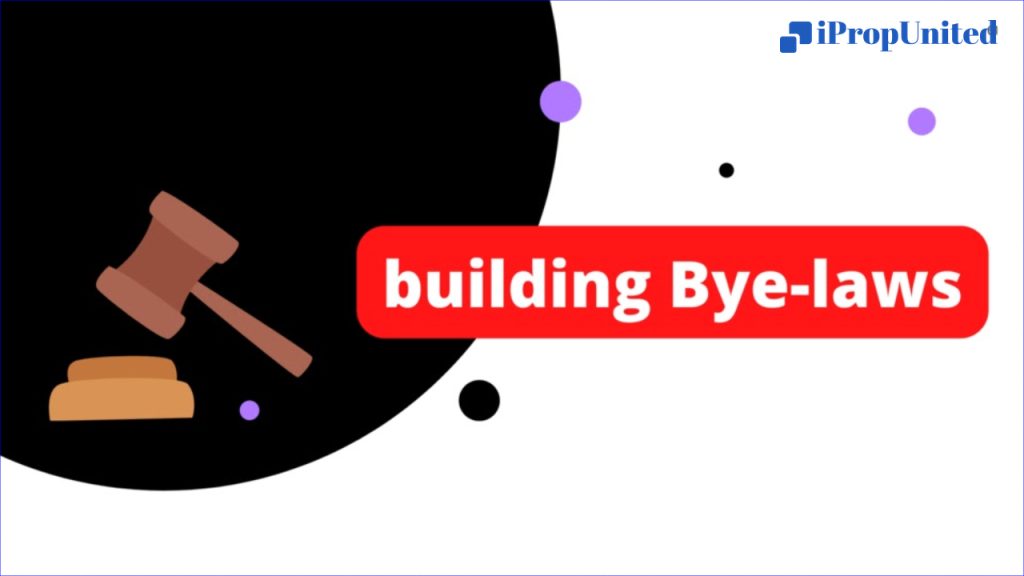The process of creating your ideal home’s design plan is simple, but the actual construction is challenging. A trouble-free construction process depends on adhering to a set of guidelines, sometimes referred to as “building bye laws.” These fundamental specifications set the parameters for the design and construction of the structure. Therefore, it’s important to understand what building bye rules are and why they’re necessary.

What exactly are building bye laws?
Building bye laws, also referred to as building by laws, are the standards set by governmental organizations like the Ministry of Urban Development Affairs (MUDA) and the City Corporation and Developing Authority. For instance, Bangalore’s construction codes are established by the Bangalore Development Authority (BDA). In order to facilitate orderly growth in a particular area, these standards serve as legislative instruments that regulate the design and construction aspects of buildings. They are crucial in protecting buildings against fire, earthquakes, and structural problems. A building plan won’t be approved by the development authority if it breaks bylaws. Nevertheless, these bylaws might change based on the kind of property. Building regulations for residential or educational properties may not be the same as those for commercial property development.
Objective of the 2016 Model Building Bye-Laws (MBBL) draught
Following natural disasters, most notably the earthquake in Gujarat’s Bhuj in 2001, the Ministry of Urban Development acknowledged the need for construction regulations. Model Building Bye-Laws (MBBL) was subsequently created in 2004 by the department’s Town and Country Planning Organization (TCPO). Structure safety, rainwater harvesting, wastewater recycling, solar heating, and fire safety were some of the topics covered in the 2004 MBBL.
The TCPO further widened the scope of MBBL in 2016. The amended legislation has been distributed and approved by state governments, urban local bodies (ULB), and the urban development authority, among other departments.
The following justifications led to the modifications being made:
- Concerns about the environment
- Concerns about safety and security
- Technological progress
- Mission Swacch Bharat
- Enhanced business efficiency
When do construction codes get updated?
Building bye regulations are part of a state’s town and planning department, so when a city’s development plan is changed, their amendment is typically included as well.
Residential building bye laws are published annually by a city or municipality’s development authority or municipal corporation. To make sure that developers follow any changes, the authorities frequently notify them. The authority may contact law enforcement to take the necessary action in the event of a violation.
Illegal developments may result in a variety of sanctions, including fines, property destruction, closure, and measures against the offender.
Do construction codes differ from one city to the next?
It is true that different regions have different building codes. For instance, urban areas might not adhere to a rural building standard.
The purpose of zoning regulations
- Make sure that urban and social structures are developed consistently.
- Ensure the protection of the public from hazards like noise, fire, health risks, and structural issues.
- Make the most use of available space.
- Adopt strategies that guarantee the overall health, security, and comfort of residents, such as providing enough ventilation, air, light, and other necessities.
In the broadest sense, building bye laws are a set of rules that establish the limitations on the construction of a structure within a province, city, or state. Anyone planning to build a home or work in the construction industry should become familiar with the local building codes. Any breach of the rules could result in the property being deemed illegal in the future.
Disclaimer: Access to the content on this internet page is provided by iPropUnited as a courtesy to the public service for educational reasons based on related news and stories. The accuracy of any information on this website cannot be guaranteed, however, it is all believed to be credible.
Follow and Connect with us: Twitter, Facebook, Linkedin, Instagram








